THE DROPPER RIG
An Angling Staple
By Adam Clancey
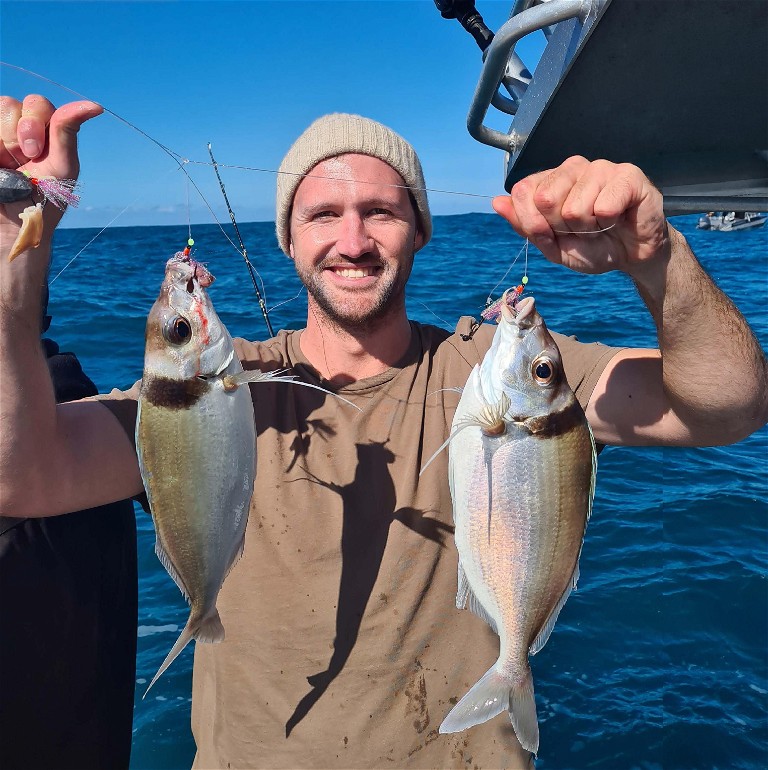
Ifind it intriguing that when looking for answers to unlock the ‘how to catch fish’ puzzle many anglers will zero in on baits, lures, location and the likes.
The question of ‘what rig?’ seldom comes into play. The dropper rig, also known by many other names including fish finder rig, paternoster rig, ledger rig and hi-low rig is a very popular rig featuring many subtleties and variations that make it an extremely important rig for all anglers.
The dropper rig in its basic form is a rig made up of a trace featuring a sinker at the bottom and two loops above that form branches to which hooks are attached. The rig is attached to the mainline by way of a swivel. Sounds simple, and it is, although there are quite a few elements that make up a good dropper rig.
The dropper rig is a rig that is designed to be fished straight up and down in the water column and is used to present a variety of baits or lures at varying depths, and in many cases to avoid getting snagged. A key benefit of this is it may be used to target a wide range of species at different depths. Imagine if you were fishing in a very weedy spot and the lower bait was hidden in the weed but the bait on the upper dropper was wafting invitingly above. The fish are most likely to grab the top bait. This is very common with fish like gurnard and tarakihi that live in environments that can feature varied terrain.
The dropper rig also comes into play with techniques like trout jigging, deep water fishing for hāpuku, bluenose, gemfish and the like, because it can present baits at great depths without getting tangled. In the South Island, the dropper rig is often called a ‘ledger rig’ and is the go-to rig for most bottom fishing, especially when targeting blue cod.
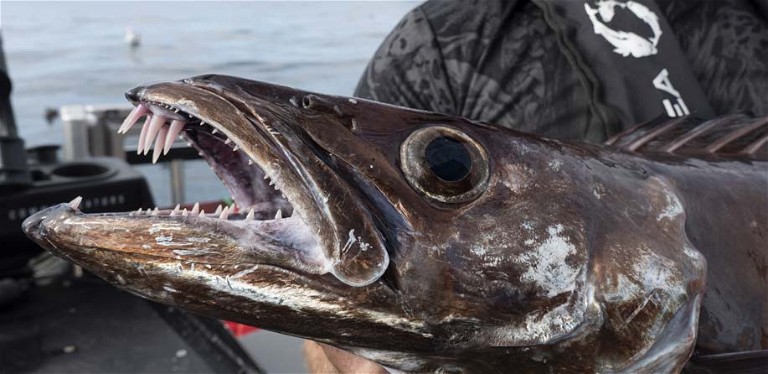
Deepwater fish can really mess up a rig, especially if they have teeth like this gemfish.
Constructing a dropper rig is easy and requires three popular knots: the uni knot to attach the swivel to the top of the rig, the dropper knot to form the loops, and in most situations a double overhand knot to form the loop at the bottom of the rig to attach the sinker (although using a second swivel with a clip is better to help reduce twist).
The weight of trace is dictated by things such as the target species and fishing technique. For example, if trout jigging you may use 5-6kg trace, whereas for a hāpuku dropper rig you may use 100kg or heavier. The other factor with the trace is that you want it to be stiff enough to make the droppers hang out and not get tangled when hooks and baits are attached. In most cases the shorter loop will give you a stiffer dropper and loops can also be stiffened by twisting the leader before tying your dropper loop or by adding a piece of tubing to the rig.
Using a single dropper and heavy sinker makes a great deepwater livebaiting rig.
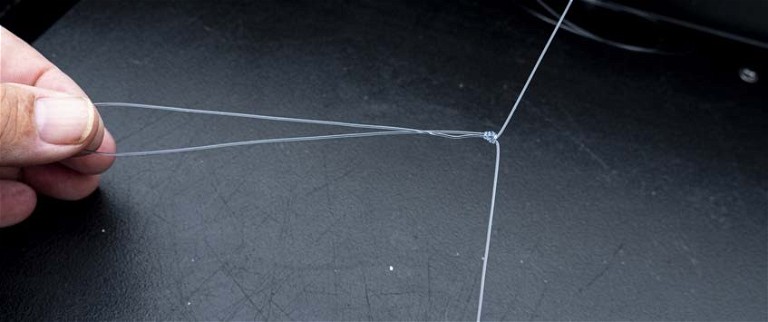
The double overhand knot is useful for simple loops but does lose a lot of knot strength.

Tear drop sinkers with swivels or loops at the top are ideal for dropper rigs.
In some scenarios, using threeway swivels rather than knotted dropper loops makes a lot of sense as they greatly reduce twists and tangles in the leader, and in the case of heavy dropper rigs can be crimped rather than knotted, offering better presentation and greater strength. Three-way swivels on a dropper rig are superb if you wish to add livebaits to your dropper rig as the threeway swivels help eliminate tangles cased by the swimming livebait.
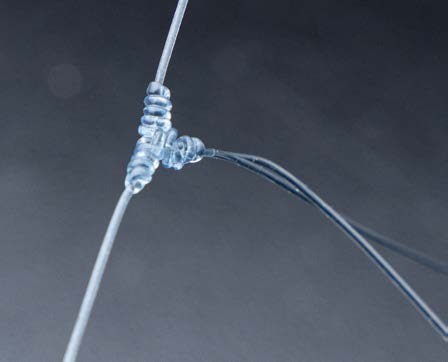
Three-way swivels are great for very light and very heavy rigs.
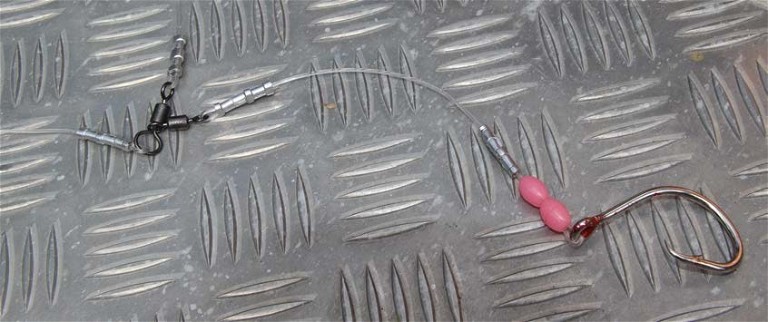
There are advanced dropper knots like the Tee Knot which gives the loop more stiffness.
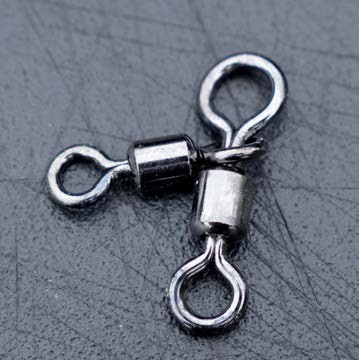
Heavier rigs can be crimped to make them a lot stronger.
Whichever dropper rig you are constructing there are some basic tips that make them function well. Remember that the rigs will vary in length depending on condition and species. The formula for a good dropper rig is one of spacing. Starting at the swivel at the top of the rig that connects to the mainline on your rod and reel, allow a good length of line then tie your first dropper knot. Make the loop so it hangs away from the main part of the rig then use a bit more than double the length of the dropper to the next dropper knot. This will make sure that the two dropper loops don’t get caught up while fishing. Then use another good length to the bottom loop or swivel so that both loops will be well up off the bottom.
A good tip if fishing in particularly snaggy ground is to add some sacrificial line to the bottom of your dropper – line of much lighter breaking strain that will snap if the sinker becomes snagged. This technique is a real advantage when deepwater fishing because if you do not do this your line may well break in the middle of your braid and in 200-plus metres of water could be a lot more expensive than losing a sinker. Also, if you get snagged with a fish on there is a much greater chance of landing the fish. The best choice of sinkers are ones that have a swivel or a loop at the top and are teardrop or streamlined. Avoid sinkers with flat sides as they will not be as hydrodynamic. As mentioned, the size and length of a dropper rig will vary – a blue cod dropper rig may be very short and tied with very heavy trace as blue cod have a habit of spinning when hooked, whereas a trout jigging rig may be over two metres long with up to three droppers and tied on light line.
When it comes to hook choice for dropper rigs in 90% of cases circle hooks would be the preferred choice. The reason is that most dropper rig fishing is done in deeper water or strong currents and the fish will hook themselves. Exceptions are when using lures or flies. To make dropper rigs more attractive to fish they are often embellished with luminous beads and tubing, small squid lures and lights in the case of deepwater dropper rigs. A great tip is to add a softbait to a baited hook adding some extra action to the rig and also to make the rig attractive, even if the bait is stolen. This is a great technique for everything from gurnard to groper.
The ways to fish a dropper rig are as varied as the different variations of the dropper rig itself. In most bait fishing situations, the rig would be dropped to the desired depth and wound up a couple of turns. When drift fishing it’s a matter of constantly adjusting the depth as the depth contour changes. In most cases don’t be tempted to strike at the first signs of a bite. It’s better to hold your rod low and if you feel the weight come on, wind and take the weight of the fish as this will secure a much better hook set.

Dropper rigs are very useful when surfcasting.
TYING A DROPPER LOOP
• Start by holding the fishing line in one hand, leaving enough tag end to work with.
• Form a loop with the tag end, ensuring that the working end of the line crosses over the standing part (the main line).
• Hold the crossover point between the working end and the standing part with your fingers, creating a loop that opens toward you.
• Take the tag end and wrap it around the loop’s standing part. Begin by passing it behind the standing part, then bring it over the loop and pass it behind again.
• Continue wrapping the tag end around the loop, making 3-4 wraps depending on the size of the loop you want.
• With the wraps completed, hold the tag end and the standing part of the loop together.
• Insert the tag end through the loop’s top opening, going from the backside to the front.
• Gently tighten the wraps by pulling both the tag end and the standing part simultaneously. Make sure the wraps are snug but not overly tight at this point.
• To create a symmetrical and well-positioned dropper loop, slide the wraps along the standing part until you achieve the desired loop size. If necessary, adjust the wraps so they’re evenly spaced around the standing part.
• Once you’re satisfied with the loop’s size and position, pull the tag ends firmly to fully tighten the knot.
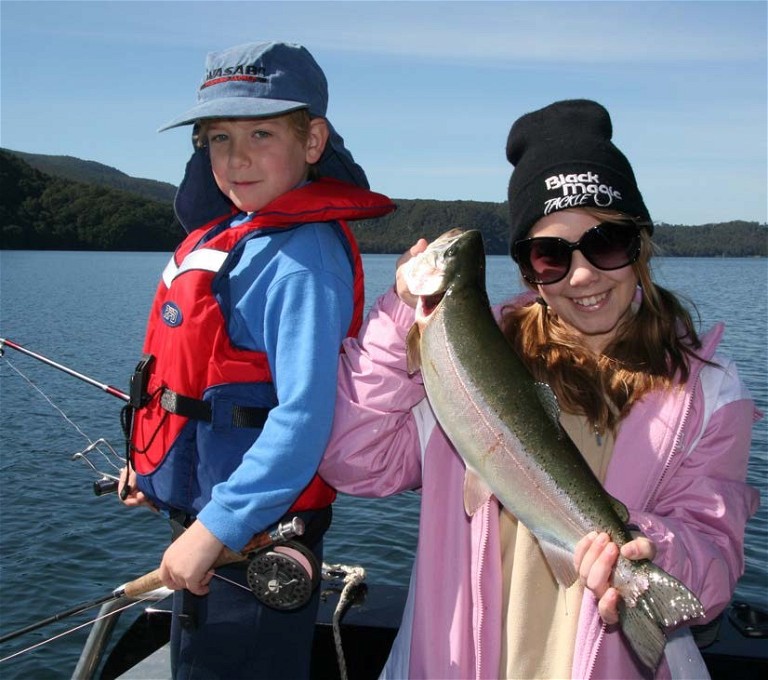
Trout jigging uses up to three droppers with flies.
Tying and using a dropper rig can significantly improve your fishing success and enjoyment. Its versatility, reduced tangle risk, and ability to present multiple baits at multiple depths set it apart from other rigs. Give it a try on your next fishing expedition and watch how this rig increases your chances of hooking a variety of fish species. Happy fishing!
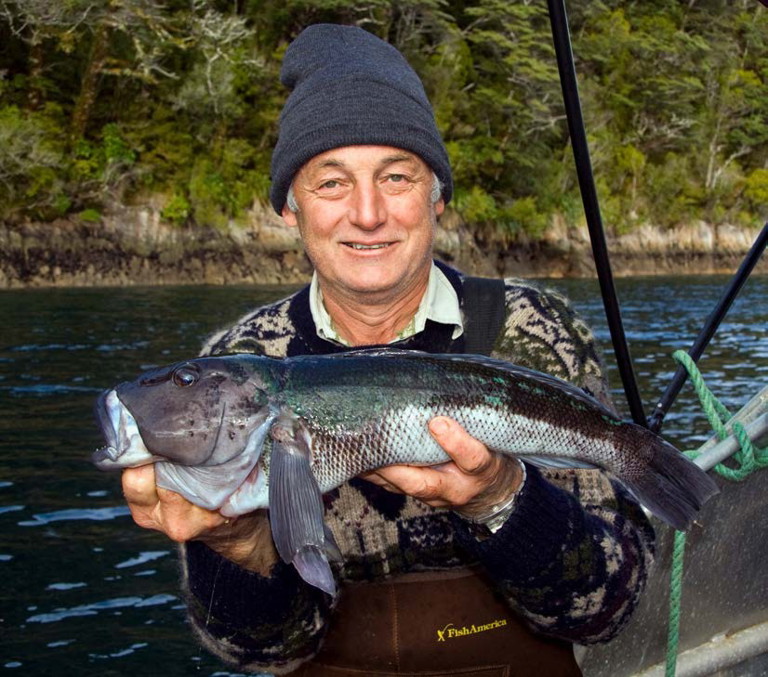
The dropper rig is ideal for targeting blue cod.